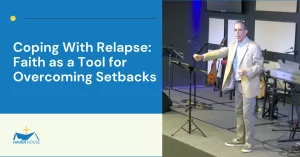
Table of Contents
Many people across the world drink alcohol regularly. Whether you choose beer, wine, or spirits, alcoholic beverages are nearly always accessible, and alcohol is considered an adjunct in social situations like parties and other gatherings. It is frequently used to reduce tension, unwind after a long day, or complement a celebration or a time of sadness.
Furthermore, alcohol is considered a stress reliever, and many individuals head to the pub after work to unwind, while others return home to relax with a glass of wine on the couch. Indeed, alcohol is a social lubricant woven into the fabric of society.
Although alcohol is not physically addictive, people can develop an alcohol dependency where they crave the effects associated with the consumption of alcohol. This craving is tantamount to addiction, which is harmful since it will inevitably lead to overconsumption and resultant harmful physical effects.
Can Alcohol Kill You?
The National Institute on Alcohol Abuse and Alcoholism (NIAAA) reports that alcohol is the third most common cause of avoidable death in America. It is estimated that approximately 15 million adults regularly abuse alcohol every year, and one out of eight adults in America suffers from alcoholism. Over 140,000 American adults die from alcohol abuse, and 6 % of American adults are alcoholics. Alcohol differs from other illegal drugs that cause overdose deaths because it kills people slowly by degrading the body.
Alcohol is destructive not just to the individual but also to society as a whole. Some critics of alcohol have labeled it the world’s deadliest drug. This title is debatable, but one thing is for sure, alcohol is one of the drugs that can kill you if consumed too much. Slowly through degradation of your internal organs, or it may cause death indirectly as a contributing factor in incidents such as automobile accidents, aggression, and sexual assault.
What is the Most Dangerous Drug?
According to research published in 2010 by British academics, alcohol is the most dangerous substance in modern-day society. The study estimated that it was three times more dangerous than cocaine or tobacco and eight times more dangerous than Ecstasy. The study also noted that alcohol was more dangerous than other drugs because it was more readily available and legal, and its use is far more widespread by much greater numbers. Because of the study’s findings, scientists believe that programs designed to combat the hazards of alcohol should be a public health priority.
The World Health Organization estimates that alcohol-related hazards kill 2.5 million people yearly due to heart and liver disease, car accidents, suicides, and cancer. In the same study, alcohol scored 72 out of 100 on the scientists’ danger assessment score. Meanwhile, heroin scored 55 out of 100, while crack scored 54.
Most Other Drugs Are More Difficult to Obtain Than Alcohol
Did you know alcohol is the most often used substance in treatment facilities? Despite being one of the drugs that can kill you, alcohol is legal in the United States, the United Kingdom, and many other nations worldwide. As seen by this study and the far-reaching impacts of alcohol, legal substances inflict just as much, if not more, harm than illicit drugs.
The harm inflicted by legal substances may be greater than that inflicted by illegal substances because legal ones are more accessible to the general populace. Secondly, because of its popularity and accessibility in our culture, most people do not even consider alcohol to be a drug.
A Wide Range of Diseases is Caused Directly by Alcohol
The research, published in the journal Addiction, demonstrated that alcohol is a direct cause of breast, liver, colon, esophageal, and other cancers. The study also stated that there is increasing evidence, albeit not definitive, that alcohol promotes skin, prostate, and pancreatic cancer. Light-to-moderate drinkers are also in danger, as alcohol consumption has been directly linked with seven different types of cancer.
Alcohol also causes fatty liver disease, liver cirrhosis, and alcoholic hepatitis, all of which can slowly kill you. Heavy drinking can weaken the heart and interfere with delivering oxygen and nutrients to specific organs in your body. Prolonged and heavy alcohol use can also impair brain function and structure. Alcohol contributes indirectly to fatalities such as those occurring in DUI vehicle accidents, and it is also often responsible for the destruction of relationships and property devastation.
The Deadliest Drug: Why is Alcohol Dangerous?
Other variables contribute to alcohol being one of the worst drugs ever, including:
Accessibility
Alcohol is a widely available substance. In the United States, the legal drinking age is 21, and any adult can purchase alcohol from a bar or a liquor shop. While certain states and towns may restrict the hours in which alcohol can be sold or served, getting alcohol remains a comparatively simple process. Even teens have easy access to alcohol, whether at their parents’ houses, older siblings, or classmates. According to a poll, 29% of youths drink, and 14% binge drink.
Dependency
Alcoholism is a harmful disorder when a person regularly consumes this drug. Drinking alcohol does not automatically result in developing a drug use disorder or addiction. However, because alcohol is so widely available and socially accepted, it can be challenging to notice the warning indications that it is becoming a problem.
Drinking too much alcohol can have damaging effects on a person’s health and can also be detrimental to those around them. Furthermore, if a person has been abusing alcohol for a long time, suddenly quitting may prove harmful, and the process of quitting may have to be conducted as a slow withdrawal under medical supervision.
Impaired Decision-Making
Many individuals consume alcohol because of the effects it has on the brain. For example, alcohol can help you feel less inhibited, and it can dull physical and emotional pain. However, alcohol can also have detrimental effects, such as impaired motor functions, loss of memory, and reduced cognitive ability.
Blood alcohol concentration is directly disproportional to mental capacity and motor function use — the higher your blood alcohol content, the lesser your mental capacity and motor function use.
Conclusion
Many people have addressed the question, “is alcohol dangerous?” The answer is that if we are to formulate a conclusion based simply on numbers, alcohol is the world’s deadliest drug. Alcohol is, directly and indirectly, responsible for a greater number of fatalities than many other drugs combined.
That said, it is important to note that the physical properties of alcohol are rarely life-threatening if consumed in moderation. Abuse of alcohol over an extended period can lead to the physical degradation of your brain and internal organs, but even then, it is not necessarily a death sentence.
Going by the numbers of alcohol-related deaths, it would appear that alcohol is the world’s deadliest drug. However, numbers can be misleading and should be analyzed in relation to the entire picture. For example, the only reason there are more alcohol-related deaths than any other drug is that alcohol is legal throughout the world and easily accessible.
Haven House Recovery Center Can Help You!
Though deciding whether you need treatment or helping a loved one receive the care they require might be challenging, there are methods to manage addiction safely and efficiently. Haven House Recovery is committed to assisting people in breaking free from the painful cycle of addiction. We provide high-quality care to clients in the early phases of therapy and throughout their long-term recovery.
Our facility specializes in addiction recovery in Clarksville and treats alcoholism in a comprehensive and personalized manner, including therapies such as medication-assisted treatment and cognitive behavioral therapy. Our empathetic team of professionals collaborates with you to choose the best strategy to understand and recover from addiction.
Newsletter Signup
Discipleship Training
“The teaching of the wise is a Fountain of Life, turning a person from the snares of death.”
Proverbs 13:14 NIV


